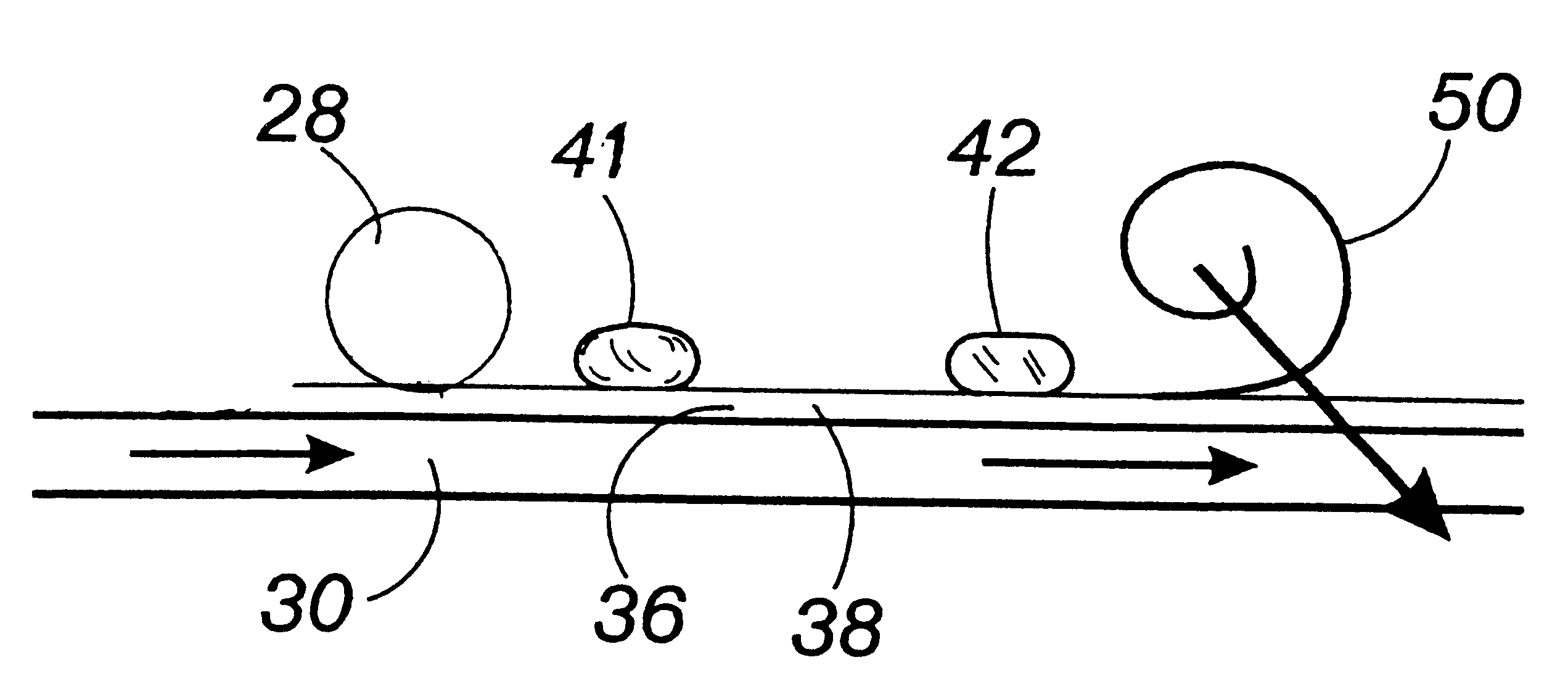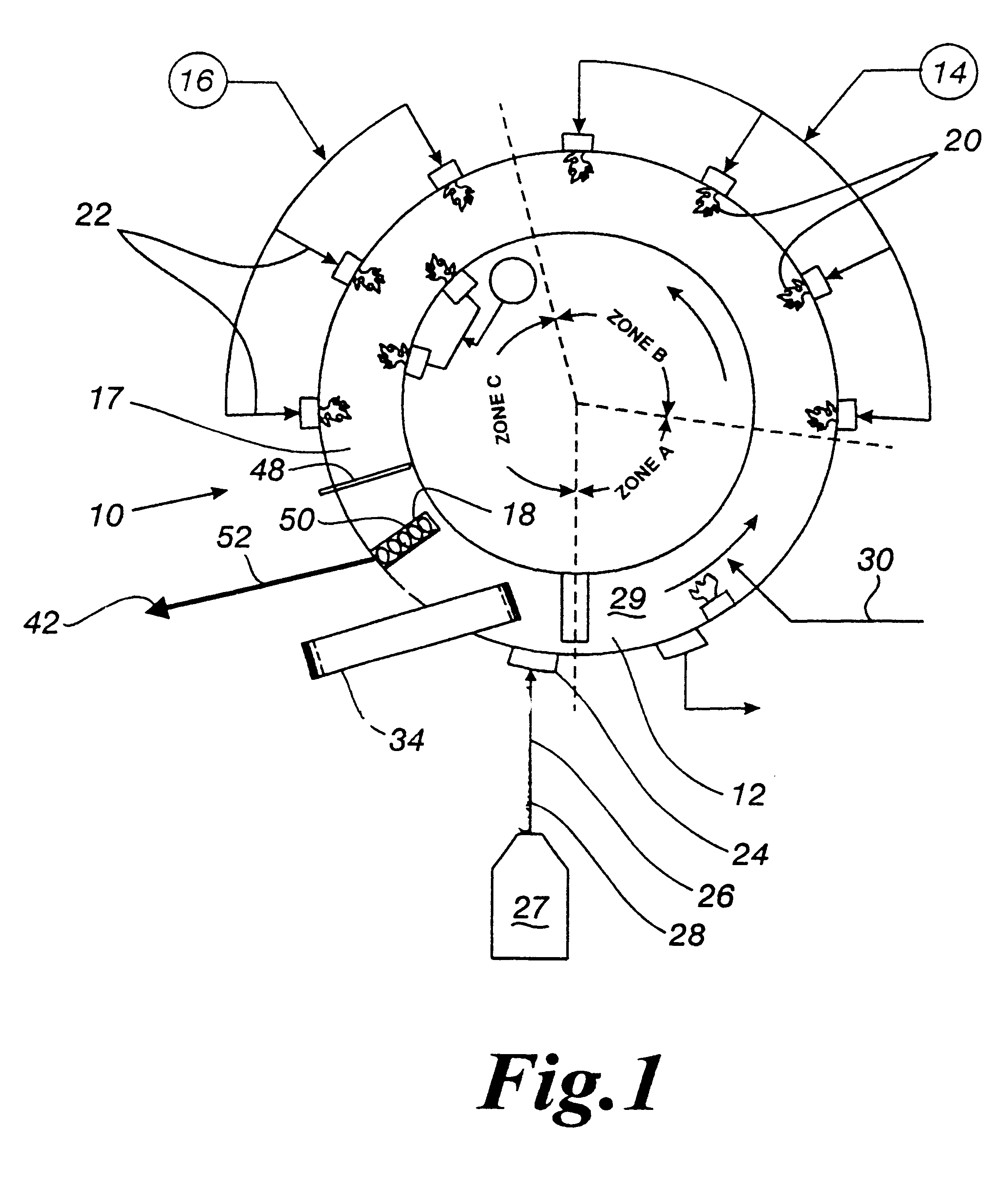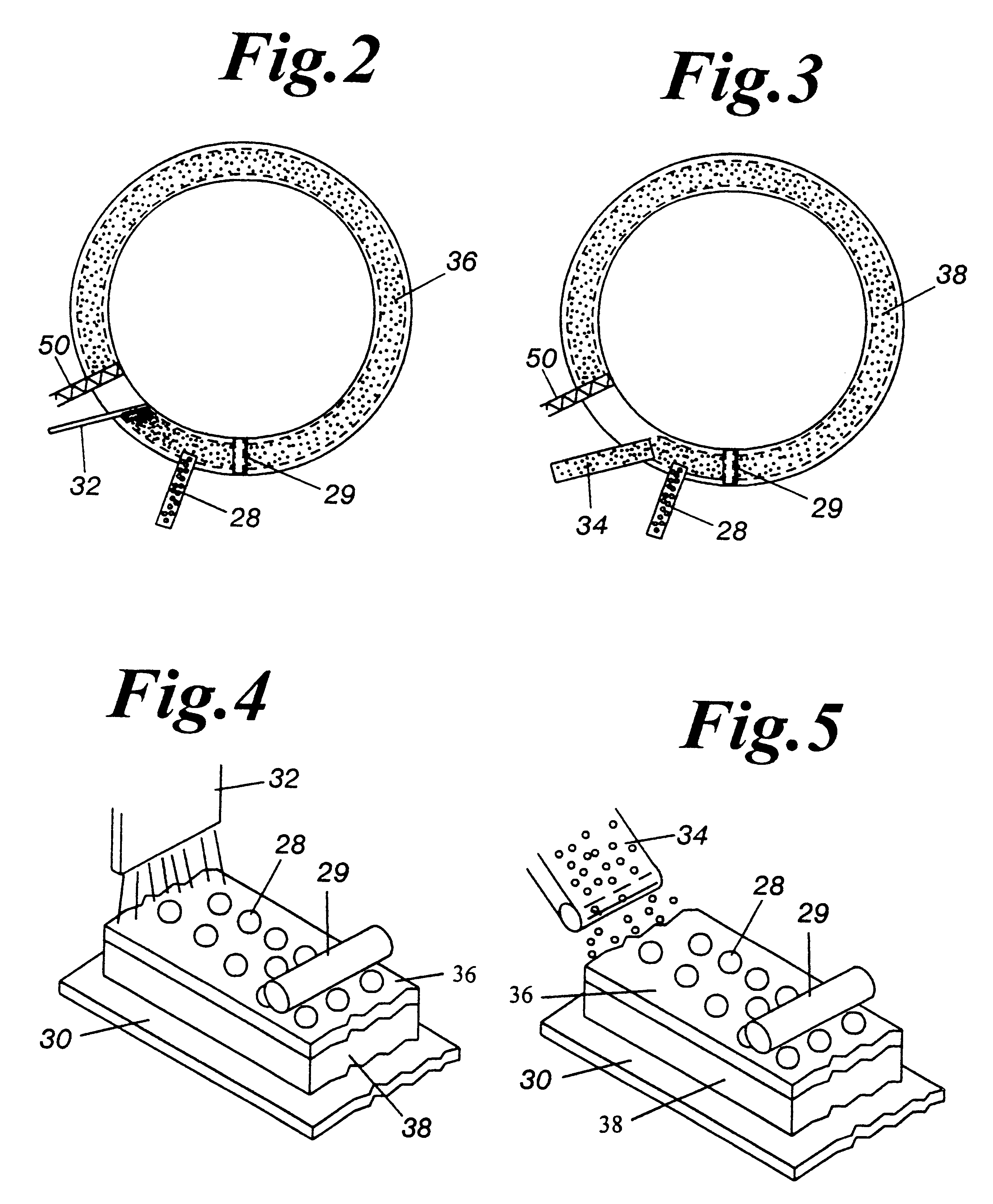Iron production method of operation in a rotary hearth furnace and improved furnace apparatus
a technology production method, which is applied in the direction of furnace types, blast furnace components, blast furnaces, etc., can solve the problems of difficult removal or discharge of purified solid iron and low carbon product from the furnace, and achieve the effect of improving the utilization of rotary hearth furnaces and high purity
- Summary
- Abstract
- Description
- Claims
- Application Information
AI Technical Summary
Benefits of technology
Problems solved by technology
Method used
Image
Examples
Embodiment Construction
Referring now to the drawings, and more particularly to FIG. 1, a direct reduction furnace 10 is utilized for reducing iron oxide feed material. The furnace, such as a rotary hearth furnace (RHF) 10 has dimensions of a typical hearth furnace utilized in the iron production industry with an active hearth width of approximately 1 m to approximately 7 m width, or wider. The RHF 10 has a refractory layer surface or vitreous hearth layer surface 30 that is rotatable from a feed material zone 12, through approximately two or three burner zones 14, 16, 17, a reaction zone 17 and discharge zone 18 (see FIG. 1). The refractory layer surface or vitreous hearth layer surface 30 is rotatable in a repetitive manner from the discharge zone 18 to the feed material zone 12, and through the zones 12, 14, 16, 17, 18 for continuous operation. The burner zones 14, 1617 are each fired by a plurality of air / fuel, oil fired, coal fired, or oxygen enriched burners 20, 22.
The feed material zone 12 includes ...
PUM
| Property | Measurement | Unit |
|---|---|---|
| temperatures | aaaaa | aaaaa |
| temperatures | aaaaa | aaaaa |
| temperatures | aaaaa | aaaaa |
Abstract
Description
Claims
Application Information
 Login to View More
Login to View More - R&D
- Intellectual Property
- Life Sciences
- Materials
- Tech Scout
- Unparalleled Data Quality
- Higher Quality Content
- 60% Fewer Hallucinations
Browse by: Latest US Patents, China's latest patents, Technical Efficacy Thesaurus, Application Domain, Technology Topic, Popular Technical Reports.
© 2025 PatSnap. All rights reserved.Legal|Privacy policy|Modern Slavery Act Transparency Statement|Sitemap|About US| Contact US: help@patsnap.com



